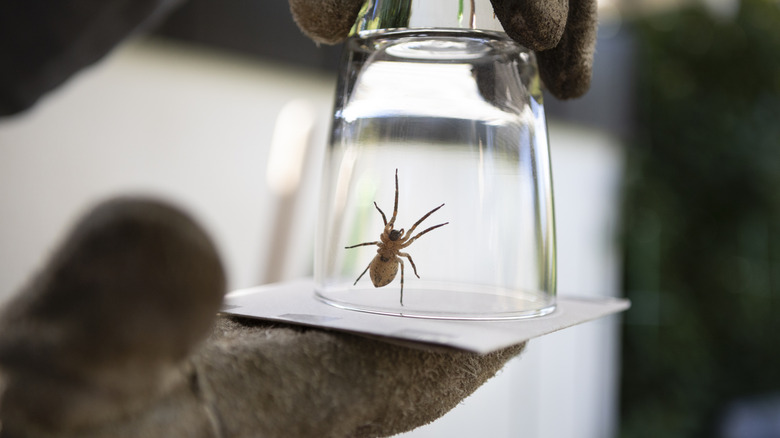Top 12 Household Spiders You Should Know About

Understanding Common House Spiders and Their Behavior
Spiders often evoke fear in many homeowners, but not all of them are dangerous. In fact, many common house spiders are relatively harmless and play a vital role in controlling insect populations. However, it's still important to know which species pose potential risks and which can be safely left alone. With over 3,500 spider species in the United States, identifying the ones you encounter might seem overwhelming. But by learning about the most commonly found spiders, you can better protect your home and family.
Spiders tend to thrive in dark, undisturbed areas such as garages, sheds, and under furniture. They’re also known to hide in corners, behind bookshelves, or beneath beds. While some species prefer outdoor environments, others make their homes inside, especially in damp and cool spaces. If the idea of sharing your space with these eight-legged creatures is unappealing, maintaining a clean home, sealing entry points, and using natural deterrents like eucalyptus oil can help reduce their presence.
Here’s a guide to some of the most common spiders you might find in and around your home:
Black Widow
The black widow is one of the most feared spiders due to its potent venom. Female black widows are easily identifiable by their shiny black bodies and the distinctive red hourglass marking on their abdomen. They can grow up to 1.5 inches in size, including their legs. These spiders typically reside in outdoor areas such as eaves, woodpiles, and garden furniture. A black widow bite can cause severe symptoms, including muscle spasms, headaches, and fever. It’s crucial to seek medical attention if you suspect a bite.
Brown Recluse
The brown recluse is another spider that should be taken seriously. These spiders have six eyes (unlike most spiders, which have eight) and are identified by a violin-shaped mark on their backs. They are about the size of a penny and are known for their non-aggressive nature. However, their bites can cause painful sores that may require medical treatment. If you find brown recluses in your yard, it might indicate an infestation of the insects they feed on.
American House Spider
Despite their intimidating appearance with spotted bodies and striped legs, American house spiders are generally harmless. They are small, measuring less than a third of an inch, and often live in garages, sheds, and furniture. Their bites usually result in minor irritation, such as redness and swelling, and typically heal on their own.
Wolf Spider
Wolf spiders are fast-moving hunters that do not build webs. They are typically gray, brown, or black and are often mistaken for other spiders. These spiders are not aggressive unless threatened and are considered largely harmless. You're more likely to find them in yards, under leaf piles, or occasionally inside homes.
Cellar Spiders (Daddy Longlegs)
Cellar spiders, also known as daddy longlegs, are often confused with harvestmen and crane flies. Only pholcid spiders are true spiders, while the others are different arthropods. Cellar spiders are known for their long legs and preference for hanging upside down in webs, particularly in basements and garages. They are not dangerous to humans.
Jumping Spider
Jumping spiders are small, colorful, and active during the day. They have short, stubby legs compared to wolf spiders and are known for their ability to leap. These spiders are harmless and can be found both indoors and outdoors, especially in sunny areas like decks.
Hobo Spider
Hobo spiders are part of the funnelweb family and are often mistaken for more dangerous species. They have long legs and yellow markings on their abdomens. Despite their intimidating web structures, hobo spiders are generally non-threatening and not known to have toxic venom.
Grass Spider
Grass spiders are closely related to hobo spiders and create funnel-like webs in grassy areas. They are small, brown, and typically avoid human interaction. While they can bite, it is rare, and the effects are usually mild.
Orb Weaving Spiders
Orb weavers are brightly colored and known for their large, intricate webs. They are beneficial in gardens as they trap pests like moths and caterpillars. Although they are not aggressive, their webs can be messy, so it’s advisable to remove them from windowsills.
Jorō Spiders
Jorō spiders are an invasive species found primarily in the southeastern U.S. They resemble orb weavers but are larger and more intimidating. While they rarely bite, their increasing population has raised concerns among some ecologists.
Tarantula
Tarantulas are large, hairy spiders that are mostly found in the deserts of the American Southwest. Though they have venomous fangs, they are not aggressive toward humans and rarely bite.
Sac Spider
Sac spiders are pale yellow or green and blend well with walls and ceilings. They are small, less than half an inch long, and are known for their potent bites. They are often mistaken for brown recluse bites due to similar symptoms.
By understanding these common spiders, you can better manage their presence in your home and take appropriate actions when necessary. Whether they are harmless or potentially dangerous, knowledge is always your best defense.
Post a Comment for "Top 12 Household Spiders You Should Know About"
Post a Comment